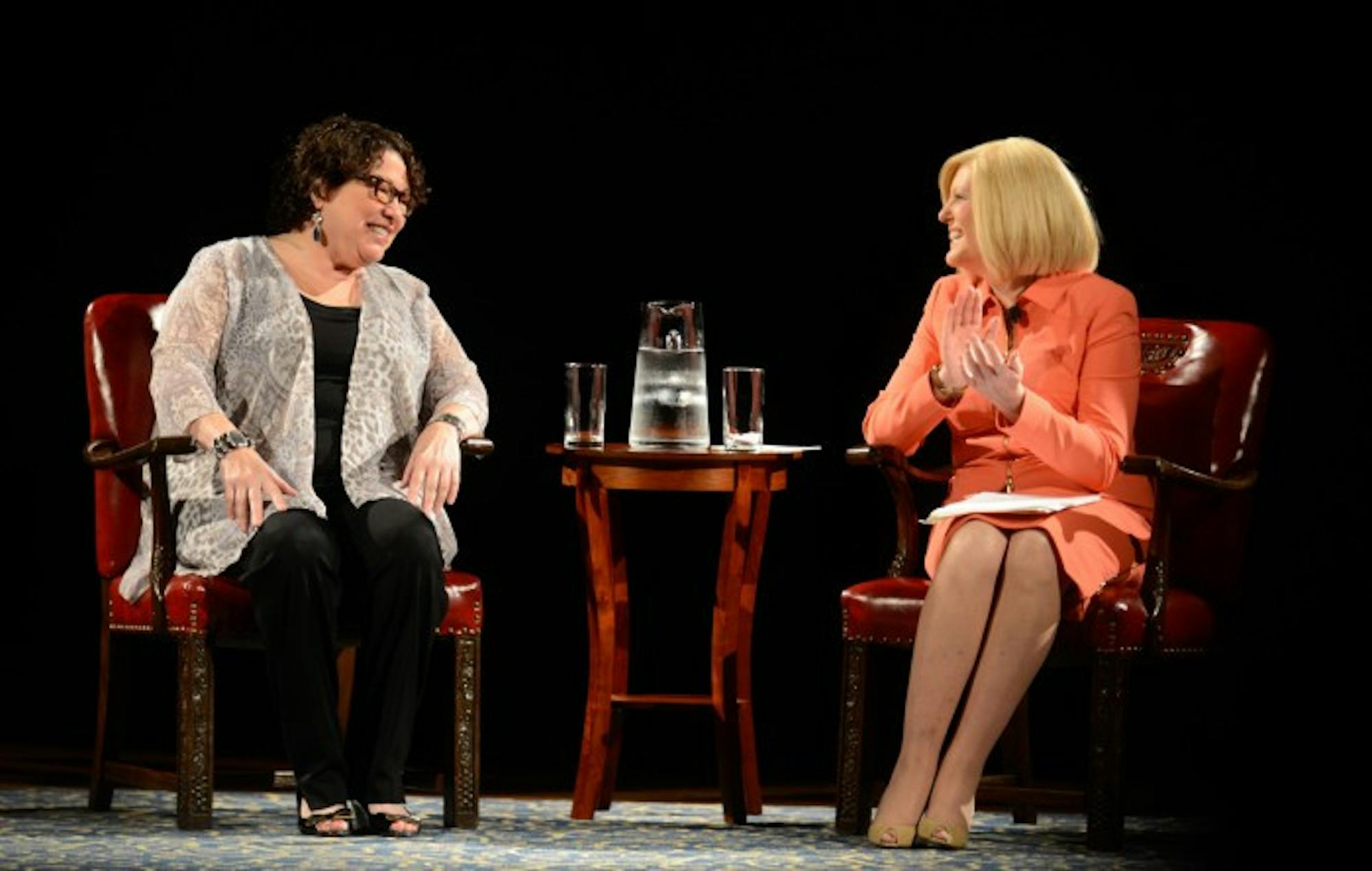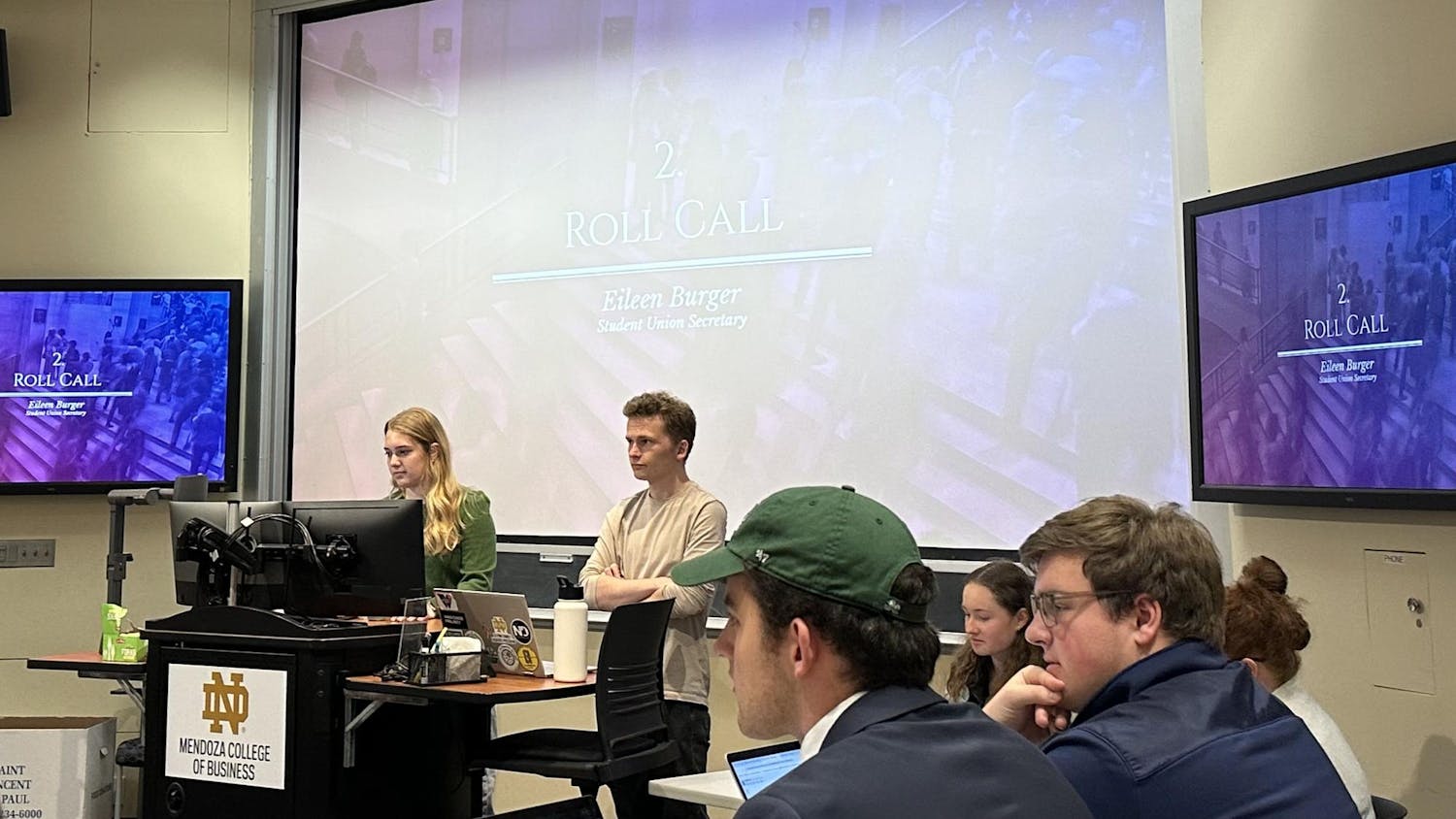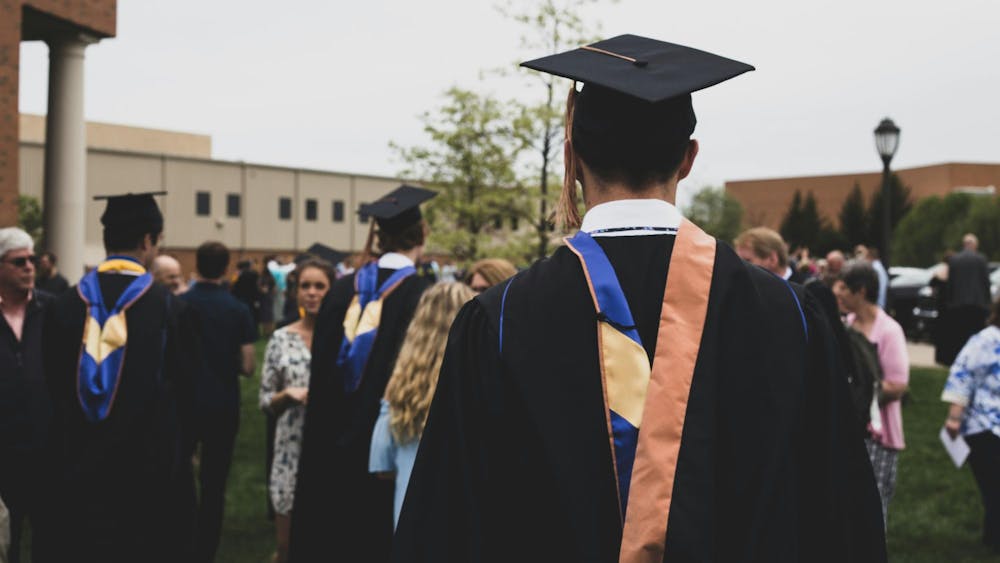U.S. Supreme Court Justice Sonia Sotomayor discussed a wide variety of issues, including court procedure and diversity, in a public conversation with NBC News correspondent Anne Thompson at Leighton Hall in DeBartolo Performing Arts Center (DPAC). Students and faculty from across the University attended the discussion, which was moderated by U.S. Court of Appeals Judge Ann Claire Williams.
Sotomayor, who Williams described as a “dreamer of big, impossible dreams,” said the day she accepted her nomination to the Court was a profound moment in her life. When entering the room behind President Barack Obama and Vice President Joe Biden, she said she felt a sense of detachment from reality.
“And at that moment, I felt like my spirit had left my body," Sotomayor said. "I was looking at myself from up there … I couldn’t connect with my emotions and I knew, ultimately, that the reason for that was if I did, I wouldn’t be able to do what I needed to do: to give a speech. I thought that feeling would end that day, but it lasted for about a year and a half. I watched myself doing things that I would have never thought possible.”

When Thompson, Notre Dame class of 1979, asked how justices reach decisions on court cases, Sotomayor said the process relies heavily on personal interaction and discussion.
“A lot of the initial decision making is personal. Generally speaking, the first time we get to talk about a case is oral argument,” she said. “Through our individual questions our colleagues are understanding each other. We’re exploring the strength and weaknesses of the case through our questions."
The justices then hold a conference amongst themselves and disclose their opinions and reasoning, Sotomayor said.
“So the chief [justice] will start, and his is usually the most forceful explanation. He’ll come up and say, ‘Well, this is the way that I’m voting, but I’m a little bit unsure, and this is what’s still troubling me,’” she said. “He also explains why some counterarguments don’t convince him. What happens is then we go down in descending order, around the room, in descending order of seniority. … By the end of the discussion, we all sort of know what each is thinking.”
Sotomayor acknowledged that while the justices can hold conflicting opinions, the justices’ commitment to upholding the Constitution unites them.
“Many of us have similar approaches to constitutional interpretation, but the fact that we have similar approaches doesn’t always mean we come to a similar result. And there is no one who is shy on the court about either expressing themselves or who has a failure of courage to vote for a position that is unexpected,” she said. “I think every justice on the Court is devoted to the Court. Each one of us cares deeply about the Court’s institutional responsibility to society. … But we also have a very deep abiding passion about the Constitution, our system of government, about our respect for the law, which leads us to believe that some things can’t be compromised.”
When asked what the inclusion of women as justices brings to the Court, Sotomayor said the Court started ruling on cases that supported women’s rights.
“It was only when Sandra Day O’Connor and Ruth Bader Ginsburg joined the Court that we had the first case that found gender discrimination that was unacceptable, and that was the Virginia Military School case [United States v. Virginia]. Before that, the Supreme Court had almost routinely never voted in favor of a women’s issue,” she said. “A lot of people don’t remember or realize that. The court might have been a slight step ahead of the society when it came to race inequality; it was ten steps behind society when it came to gender inequality. I’m not saying that it was only the presence of women, but I am saying that the presence of women does change the conversation a little bit. … There is a difference in sensitivity in the way you address things when you have some diversity on the Court.”
Sotomayor said that since her appointment to the Supreme Court she has realized the humanity of the people involved in making history.
“We are ordinary human beings, with strengths, with weaknesses, with foibles, with courage, and sometimes fear. When we get disappointed in our elected officials, often it’s because we see the human side of them,” she said. “That doesn’t mean we should respect them less but that you should respect them because they’re trying to do jobs that are hard.
“In my explaining to you what the process of the court is, what the process of the law is, I hope you come away with a respect for the people who are trying their best, human beings that are trying their best, to do what’s right. And that doesn’t mean that they always succeed according to your judgment, because there’s going to be court opinions that you agree with and that you disagree with. But it is a product of people trying to do what’s right. I will hope that will lead people to less disillusionment, to more respect for the court instead of less, and more respect for the people who have the opportunity to try to do the right thing.”
The crowd was taken aback when Sotomayor responded “no” after Thompson asked if she felt as if she “belonged” on the Court.
“I am different and yet I’m not because we’re all engaged in the same enterprise. We’re all trying to come to the right decisions together, and we’re all part of that conversation,” she said. “To that extent, I belong. But will I ever quite feel that I have their same background, their same understanding of the world that I operate on? Not really.”
Sotomayor said she has learned to respond to differences as an opportunity to learn something about new institutions, people and situations.
“For me, it’s very, very important not to think of differences as good or bad, but just different, and understanding what moves people to the choices they make,” she said.
After her discussion with Thompson, Sotomayor responded to questions posed by Notre Dame undergraduate and law students.
In answer to a question about her experience of discrimination as a successful Latino woman, Sotomayor said expectations for women of color are higher than for the average citizen. She also said discrimination can come from unexpected places, and often results from misunderstanding and miscommunication.
“People don’t really understand their own prejudices,” Sotomayor said. “Most people do things that are discriminatory, or say things that are hurtful, without really knowing they’re doing it.”
In the face of discrimination, Sotomayor said, people have a choice – either to retreat from a negative experience, or to try to reach a greater level of mutual understanding and respect with those who have offended them.
“Those small slights, those senses of not belonging, can make you not belong if you let them,” she said. “You can belong and make friends in almost any place or setting you’re in, but sometimes you have to make the effort to bridge that gap.”
Indeed, Sotomayor said making friends, particularly with people of differing opinions, is invaluable for personal growth. She said although she has found it difficult at times, she has been able to maintain friendships with other justices on the Court despite their opposing outlooks.
“We disagree with each other, but we do listen,” she said. “We try to persuade each other, we try to convince each other, and often we fail.
“The challenge is to make friends who don’t agree with you, who try to talk you out of your mistakes, who try to change your mind. Whether they succeed or not is irrelevant – you learn something from them.”
Sotomayor said one failing of the Court as a whole is its lack of diversity – not only in terms of gender or race, but also in terms of the legal backgrounds of the justices. She said all current justices on the Court were prosecutors, and only one, Ruth Bader Ginsburg, has a civil rights background.
“We have areas of practice that people have never experienced: immigration law, family law,” she said. “But we’re making decisions that affect every one of those areas of the law.”
The members of the Court are not the only ones who could benefit from being more well-rounded, Sotomayor said. Addressing the students present, she said college students should take advantage of opportunities to expand their learning in a variety of areas.
“You should be learning about the world, and to do that you have to get out of your comfort zone and study things that you know nothing about.”
In particular, Sotomayor said taking courses in religion, economics, sociology and philosophy are essential for understanding current events.
“When you leave this university, you should have a working knowledge of all the things that affect the human condition,” she said.













